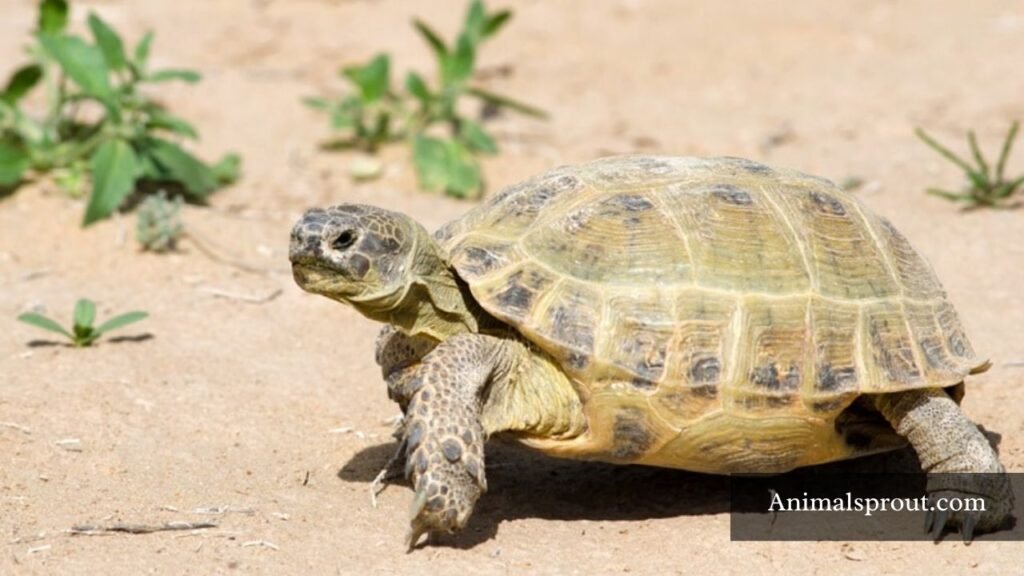Interesting Facts: Can Turtles Climb?
Have you ever watched a turtle and wondered if these slow-moving creatures can scale a steep surface? The question, “Can turtles climb?” may strike you as trivial, but understanding their climbing abilities reveals much about their adaptations and habitats. In this article, we’ll explore the surprising skills of turtles, examining the physical factors that allow some species to ascend heights and what this means for their survival in the wild. Prepare to challenge your assumptions about these fascinating reptiles!
Can Turtles Climb?
While it’s well-known that turtles are primarily land dwellers and proficient swimmers, their climbing abilities might surprise you. Many species, particularly box turtles and some aquatic turtles, exhibit a surprising knack for navigating vertical surfaces. Their strong legs and strategic use of their shells allow them to grip onto uneven terrain, making short climbs possible, especially when motivated by food or an escape from predators.
the environment plays a significant role in a turtle’s climbing potential. In habitats where trees or rocky outcrops are prevalent, turtles may develop better climbing techniques over generations. These adaptations showcase the resilience of these reptiles and their ability to thrive in diverse ecosystems.
Why Do Turtles Climb?
Turtles climbing might seem like a peculiar behavior, but it serves several intriguing purposes that go beyond mere curiosity. For many species, navigating vertical spaces can be a crucial survival strategy. By climbing onto rocks or logs, turtles can bask in the sun, which is vital for regulating their body temperature and promoting metabolic functions. This behavior is particularly important in colder climates, where basking can help them maintain necessary warmth before entering the water.

Climbing also offers turtles a vantage point to survey their surroundings, helping them detect potential threats or food sources. This elevated perspective can enhance their awareness of predator movements or help them locate aquatic plants to graze on. Moreover, certain species, like box turtles, utilize climbing as a way to explore their environment and enrich their foraging behavior, fulfilling their natural instincts. Thus, each ascent not only contributes to their physical well-being but also plays a critical role in their overall adaptability and survival.
Differences Between Terrestrial Turtles And Aquatic Turtles
Terrestrial turtles, like the iconic tortoise, are adapted to a life on land, showcasing a unique blend of ruggedness and resilience. Their domed shells are not just for protection; they minimize water loss in arid environments, making them ideal for dry habitats. These turtles tend to have stout, sturdy limbs suited for walking and climbing, allowing them to traverse various terrains, from sandy dunes to rocky hillsides. Their herbivorous diets often include a mix of grasses, leaves, and fruits, emphasizing their role in maintaining the ecosystem’s balance.
In stark contrast, aquatic turtles, such as the sleek slider or the vibrant painted turtle, boast hydrodynamic bodies designed for efficiency in water. Their long, webbed feet or flippers enable swift swimming, making them adept at evading predators and catching prey. Aquatic turtles primarily consume a diet of aquatic plants, fish, and insects, showcasing their adaptability to a submerged lifestyle. Interestingly, many aquatic species also take advantage of basking on sun-drenched logs or rocks, blending elements of both worlds in a fascinating interplay between land and water.
7 Species of Turtles That Can Climb
Below is the list of turtles that can climb:
- Musk Turtles
- Map Turtles
- Red-Eared Slider Turtles
- Snapping Turtles
- Russian Tortoises
- Indochinese Box Turtles
- Sulcata Tortoises
Musk Turtles
Scientific Name: Sternotherus odoratus
Musk turtles are surprising little climbers, often defying the stereotype of their aquatic roots. While most turtles are content to float and bask, musk turtles possess a unique agility that allows them to scale rocks and logs with surprising ease. This climbing ability is not just for show; it plays a vital role in their survival, helping them escape predators and access prime basking spots.

Their small size works to their advantage, enabling them to navigate spaces that larger turtles cannot. Musk turtles are known to use their strong, clawed limbs to grip surfaces, making them adept at scaling inclines. Observing these turtles in their natural habitat reveals a different side of their behavior — it’s not just about swimming; it’s about exploration and adaptability.
Map Turtles
Scientific Name: Graptemys geographica
Map turtles, known for their striking patterns and adaptability, redefine our understanding of turtle behavior. Unlike their more terrestrial cousins, these semi-aquatic marvels display a remarkable propensity for climbing. Their agile movements, combined with webbed feet designed for both swimming and gripping, enable them to scale riverbanks and rocky outcrops with surprising ease. This unique talent not only offers them a vantage point for basking but also helps evade predators in their watery habitats.
In addition to their climbing prowess, map turtles exhibit interesting social behaviors. They often congregate in small groups, basking together on logs or rocks. This social dynamic fosters a fascinating interaction where they communicate through subtle body language, showcasing their complex social structures. Observing their climbing and social habits provides a window into the nuanced world of these turtles, revealing how adaptability shapes survival strategies in the wild.
Red-Eared Slider Turtles
Scientific Name: Trachemys scripta elegans
Red-eared slider turtles, often confined to aquatic environments, have a surprising affinity for climbing — a behavior not typically associated with their species. This unique ability is driven by their instinctual need for basking spots and safe retreats away from predators. When given the opportunity, they will scale rocks and logs, demonstrating agility that belies their somewhat bulky appearance. These climbing excursions not only provide vital thermal regulation but also serve as an engaging spectacle for turtle enthusiasts.

Their climbing skills can be influenced by their environment and individual personalities. Some sliders are more adventurous than others, eagerly exploring new heights, while others may prefer to remain close to water. Incorporating climbing structures into a habitat can stimulate their natural behaviors, enriching their lives and enhancing their well-being.
Snapping Turtles
Scientific Name: Chelydra serpentina
Though often associated with aquatic habitats, snapping turtles possess unexpected climbing abilities that challenge conventional perceptions of their mobility. These robust reptiles, particularly the Common Snapping Turtle, can scale surprisingly steep terrain when motivated, whether in search of food or a suitable nesting site. Their powerful limbs and sharply curved claws are adept for gripping uneven surfaces, enabling them to ascend embankments and rocky outcroppings, showcasing their adaptability beyond the water’s edge.
Interestingly, climbing behavior is most prominent during specific times of the year. As nesting season approaches, female snapping turtles will embark on journeys to locate suitable locations, sometimes venturing significant distances from their aquatic homes. This exploratory instinct not only highlights their perseverance but also reflects the broader ecological adaptability of these creatures.
Russian Tortoises
Scientific Name: Agrionemys horsfieldii
Russian tortoises, often underestimated for their climbing abilities, display surprising agility when navigating their environments. With sturdy, rounded shells and strong limbs, these little reptiles can scale uneven terrain, making them adept explorers in their natural habitats. Watch them in action: a gentle slope becomes a grand mountain as they inch their way up, driven by curiosity.

Unlike many other tortoise species that prefer flat grounds, Russian tortoises have adapted to a variety of landscapes, including rocky areas and steep hillsides. Their climbing skills are not merely a novelty; they serve vital purposes such as seeking food, basking in sunlit spots, or evading predators. Observing a Russian tortoise scale a rock can remind us that these tortoises are more than slow-moving creatures; they’re resilient survivors crafted by nature to thrive against odds. Embrace the charm of these climbing tortoises, and you might just discover a new appreciation for their tenacity and zest for life.
Indochinese Box Turtles
Scientific Name: Cuora galbinifrons
Indochinese Box Turtles are a marvel of adaptability, showcasing unique climbing abilities that challenge the traditional perceptions of their species. Unlike many of their terrestrial relatives, these turtles have evolved to navigate both land and some surprisingly vertical terrains. Their strong, clawed limbs aren’t just for digging; they offer a surprising grip on rocky surfaces and low-hanging branches.
Observing these turtles in their natural habitat reveals a world where agility meets camouflage. With their rugged shells adorned in earthy tones, they not only blend into the forest floor but also masterfully transition into elevated spaces to escape predators and forage for food. This climbing behavior opens up a treasure trove of culinary options, from succulent leaves to fruits that other creatures might miss. The ability to scale small heights enhances their survival strategy, illustrating just how dynamic the lives of these seemingly simple reptiles can be.
Sulcata Tortoises
Scientific Name: Centrochelys sulcata
Sulcata tortoises, known for their impressive size and unique personalities, possess an unexpected trait: they can climb! While most people envision these gentle giants as slow ground-dwellers, their surprisingly agile limbs and strong shells enable them to scale low barriers and navigate rocky enclosures. This climbing ability is a fascinating testament to their adaptability, found not just in their native African savannas but also in controlled environments where they thrive.

Observing a sulcata tortoise in action is a reminder of the untamed spirit embedded in these creatures. Their climbing instincts help them explore their surroundings, discover new food sources, and even establish dominance within social hierarchies. However, this skill comes with a caveat; without proper enclosure design, they can easily escape their habitats, leaving caretakers with the challenge of ensuring secure environments. For turtle enthusiasts, this means embracing their climbing nature and creating engaging spaces that stimulate their natural behaviors, fostering both physical health and mental enrichment.
What are the risks if turtles fall while climbing?
Turtles, despite their sturdy shells, face significant risks when they attempt to climb. One of the primary dangers is the potential for shell damage. While their shells provide protection, a hard fall can lead to cracks or fractures that are painful and can compromise the turtle’s defense against predators and environmental hazards. If a turtle falls onto its back, it struggles to right itself. This position can lead to stress and even suffocation if they cannot return to their natural stance in a timely manner.
Moreover, falls can contribute to long-term health issues like internal injuries or fractures that may not be immediately apparent. A turtle that suffers an injury may also become more vulnerable to diseases and infections, as their immune system is often already compromised by stress. This precarious balance of exploration and risk highlights the importance of creating safe environments for turtles, particularly in captivity where their natural inclination to climb may conflict with their safety. Understanding these consequences not only emphasizes the need for careful habitat designs but also reflects a deeper respect for the unique challenges these creatures face in their quest for adventure.
Readmore: Explore Top 18 Most Patient Animals.
Final Thoughts
Turtles are not just land and water dwellers; they can indeed climb to some extent. Their climbing abilities vary widely among species, influenced by their physical structure and habitat requirements. While they may not be as adept at climbing as other reptiles, some turtles exhibit remarkable tenacity when faced with obstacles. Understanding these behaviors can deepen our appreciation for their adaptability and resilience in the wild.
FAQs
Do turtles climb?
Yes, turtles can climb, though it varies by species. Aquatic turtles, like red-eared sliders, may climb on rocks or logs to bask in the sun. They have strong legs and claws that help them gain traction on surfaces.
Why do turtles like to climb?
Turtles climb for several reasons, primarily driven by their instincts and environmental needs. Climbing helps them reach basking spots where they can absorb sunlight, essential for their health and temperature regulation. Sunbathing also aids in digestion and energy replenishment. Climbing can be a way for turtles to explore their surroundings, find food, or escape from potential predators.







